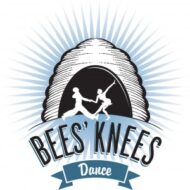–
The Myths and Facts of Getting Good Fast
When any dancer decides they would like to pursue Lindy Hop more seriously they inevitably want to “get good” really quickly, and through this desire many people fall prey to comparing themselves to other dancers. The fact of the matter is that some people learn faster than others; I would like to help give you a boost by dispelling some of the myths and half truths of fast improvement and give you a couple tips on how to jump start your own improvement.
.
#1 Trained dancers have a big advantage
The most common misconception I hear is that prior dance experience/training gives people a huge leg up – this is only partially true. Trained dancers tend to have greater body awareness than the average Joe, this combined with an attention to performance aesthetic makes a dancer who looks like they really know what they are doing when they first pick up lindy hop. The truth is most trained dance skills do not translate well to lindy hop and in most cases makes it much more difficult to learn social dance skills. To be perfectly honest I find the people who pick up the dance quickest tend to be people with sports or martial arts backgrounds. So keep on punchin’.
.
#2 I need to take all the classes!
This is another half truth, yes you should take lots of classes, but if you are not practicing (social dancing) all these classes can actually drag your rate of improvement down greatly. The solution is to practice a lot while taking your classes – social dancing is the most valuable form of practice there is. This brings me to…
.
#3 I need a dance partner to practice
This is a total myth. If you are smart about how you work on your dancing, you really do not need much in the way of dedicated practice time with a partner in order to improve. Use the time before and after classes to work out whatever is on your mind with a class mate. Also you can take a dance or two when you are out social dancing to work on your stuff, avoid doing this the whole night thought. After all, all work and no play makes… well you get the idea.
.
#4 Some people just have “it”
The old question of natural ability. The thing to remember is that everyone has their own unique aptitudes, some are simply more obvious than others. Try not to compare yourself – you have no idea where people are coming from or what prior experience they may have – focus instead on playing to your own strengths and managing your weaknesses. We all have them after all.
.
#5 What are they doing that I am not?
Not so much a myth but definitely worth talking about. There is a simple answer to this question: they are putting in the hours. People who improve quickly are putting in more dance hours. Everyone has different levels of commitment but if you put in 1000 hours over 1 or 10 years the rate of improvement will be the same hour for hour. This may be the greatest misconception of them all, that the number of years or the period of time that you have been dancing counts for something – quite frankly it does not – only the accumulated hours you have danced make the difference.
So the big question you are probably asking yourself is “how do I up my improvement?” Here are a couple of tips:
.
.
- Social dance, social dance, social dance!
. - Put in the hours – be they in classes, practicing, or social dancing there is no substitute
. - Practice smart – figure out what you need/want to work on and be dedicated in getting it where you want it to be
. - Diagnose your strengths and weaknesses – a teacher or friend can help with this
. - Write it down – keep a “Lindy Journal” of what you did in class, or make a cheat sheet of the things you are focusing on and consult it every time you dance
. - Think and talk about it – think about or discuss lindy hop every chance you get, dancing is not just a physical practice it is really important to get other people’s opinions on it, so geek out hardcore!
. - Set some goals – once you figure out what you need to work on set some goals so you have something to shoot for
. - Teach someone – there is no better way to boost your understanding of the dance than trying to pass on your knowledge even if you do not yet know that much yet

Kevin Miller
The Buzz Blogger

